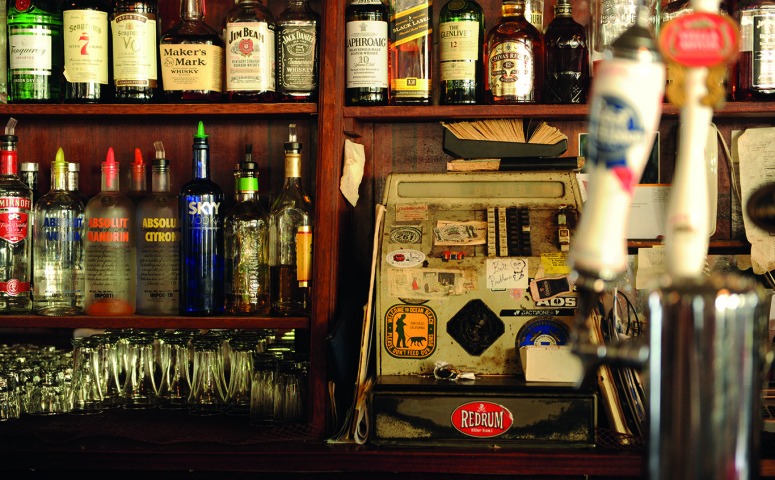JK Dineen looks and sounds like a journalist. Boston Irish. He’s not very pressed, his red hair is a little messy, you know he probably wants a cigarette, and a drink. He’s a throwback. That’s why he’s the perfect character to write a book about the legacy bars of San Francisco. But it turns out this journalist for the San Francisco Chronicle is also the perfect writer because he knows a good story when he hears one. A bar is a fast way to find a friend for life, or just the night. But writing a book like this isn’t quick work. But after just a few months “High Spirits: The Legacy Bars of San Francisco” published by Heyday Books has gone into its second printing. It’s not a guidebook to the best or the oldest bars in San Francisco. It’s a collection of stories the subject of which happens to be bars.
We checked in with JK to ask him a few questions.
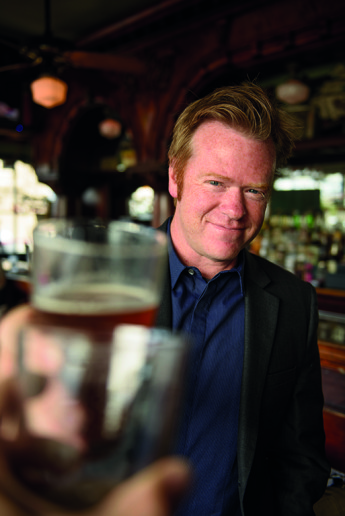
J.K. Dineen. Photo by Spencer Brown
Q: How long did it take to write this book?
About a year of full-throttle research and writing, with a few months of ramp-up and down on either end. Malcolm Margolin, the now-retired publisher of Heyday Books, floated the idea in late fall of 2013, after Heyday had just put out my book about historic preservation in California, and I signed the contract on Thanksgiving weekend. After that, I was pretty much a dedicated barfly for the next year, riding my bike from joint to joint, getting to know regulars and bartenders and owners. Writing late at night and early in the morning. Trying to juggle my job and my family responsibilities. I managed to take about eight weeks off work before I joined the staff of the San Francisco Chronicle in March of 2014. So that was helpful.
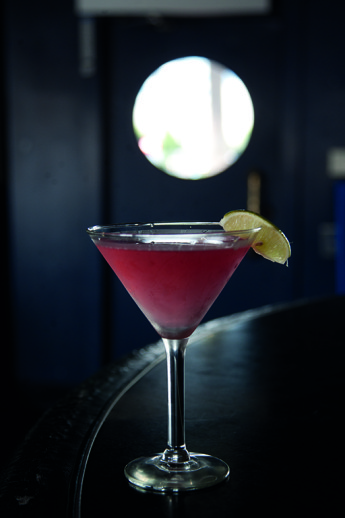
Hi Dive owner John Caine is credited with introducing the Cosmopolitan to San Francisco. Photo by Cindy Chew.
Q: How did you prepare for this project, other than by visiting bars?
I reread bar classics. All of Joseph Mitchell, of course, also San Francisco columnists like Warren Hinckle, Charles McCabe, Carl Nolte, who I am lucky enough to sit across from at the Chronicle. I spent a lot of time at the main library, listening to oral histories, looking at business directories, digging up neighborhood histories that lent insight into what the city was like when some of these drinking establishments first opened. Who drank there? What did Haight Street feel like in the 1950s when Bruno—the famous martini Nazi from the Zam Zam—was a kid and his family owned a greasy spoon called the Pell Mell with bookies in the basement? What was going on in the Bayview, AKA Butchertown, when Sam Jordan [owner of Sam Jordan’s Bar] was making a name for himself as a boxer and civil rights leader?
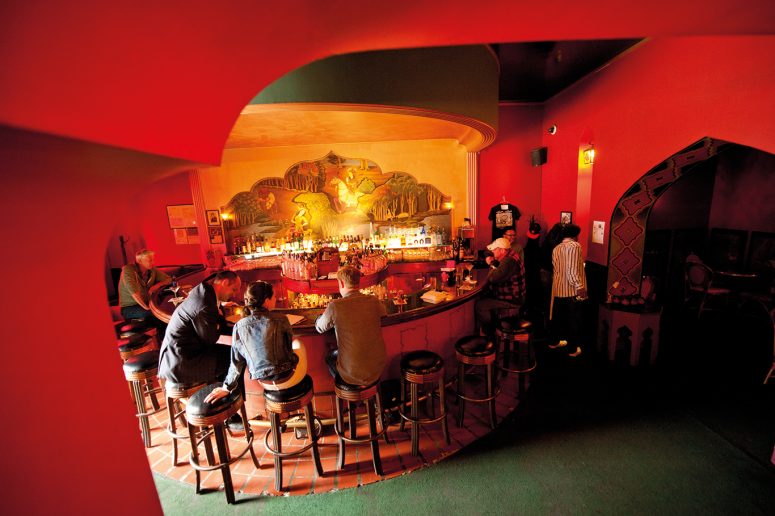
Aub Zam Zam. Photo by Spencer Brown
Q: Were some bars unsure if they wanted to be in the book?
Regrettably, in some cases, I had to cut my losses if I didn’t gain much traction. Gino and Carlo, for example, should have been in the book, but I went there four or five times and never found a receptive audience. Same with some of the bars in Chinatown, who really didn’t seem to want me hanging around asking questions. I guess I understand that—bars are sort of sacred refuges for a lot of folks. The last thing they want is some kid with a notebook taking the stool next to them and asking a bunch of nosy questions for a book. So some of the real local places full of S.F. natives—Sam Jordan’s, La Rocca’s Corner, the Philosopher’s Club—were tough to crack.
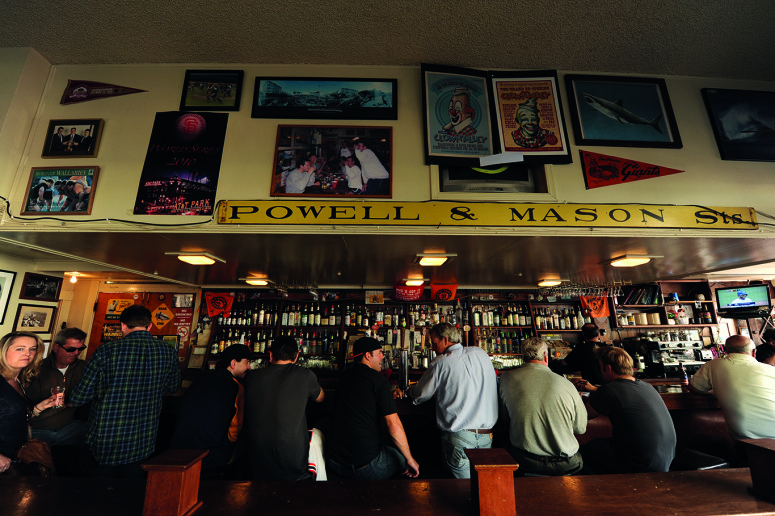
La Rocca’s Corner. Photo by Spencer Brown
Q: What are some of the best stories that you couldn’t put in the book?
Maybe the funniest one I couldn’t get in the book—it was just too long and tangential—involved the Norwegian merchant marines who arrived at Specs one winter Sunday evening. Specs—as the shipping flags hanging from the ceiling would indicate—was a great admirer of the waterfront and a friend to the seamen who still populated the residential hotels around North Beach in the 1950s and 1960s.
So these two guys from Norway stumbled into Specs right at opening one evening. Their ship was tied up in Oakland. They had been drinking in Chinatown bars. They were fumbling a whole bunch of packages, Christmas presents for their families back home. They ordered screwdrivers. Specs brought them their drinks. Then one of them fell asleep. Specs pulled the snoozing merchant marine’s drink and handed the buddy a coffee, told him to get it into the one who had passed out. Then the second one passed out. Specs pulled his drink. After a while they woke up and Specs filled them with coffee and water, shot the breeze with them. Eventually they were ready to go. Specs shook their hands and told them how to get back to BART, so they could get back to the ship in Oakland.
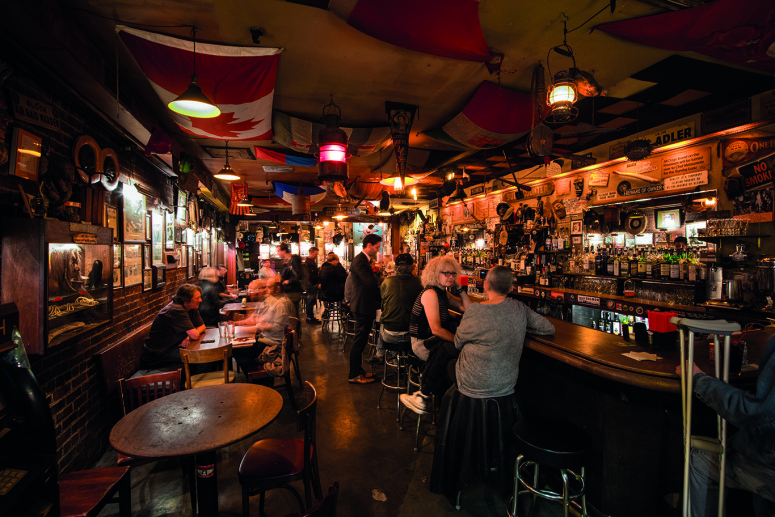
Specs. Photo by Spencer Brown
Well, Specs is at the end of an alley, Adler Alley, that cuts into the wedge-shaped block where Broadway and Columbus Avenue come together. So it’s essentially in the middle of the block and is connected by a back staircase to a building up on Broadway that is still home to the Garden of Eden strip club. In those days, Garden of Eden didn’t have a bathroom, so all the exotic dancers would come downstairs and use the bathroom at Specs. Sometimes they would hang out and have a drink before going back to work upstairs.
So after Specs wished the Norwegian guys farewell, he spent the next hour or so serving drinks and working around the bar—changing kegs out, hauling in cases of beer, cleaning up. Suddenly as he was working he heard a tremendous crash at the bottom of the stairs. He rushed over and swung the door open and who did he see in a heap at the bottom of the stairs but one of the merchant marines. The guy opened his eyes, looked at Specs, and just let out a scream! Because what kind of city is it where you go into one bar, say goodbye, walk what seems like a long way up Columbus, take a right on Broadway, go into another club, hang out, fall down the stairs, and end up right back where you started? It was like a San Francisco version of Alice in Wonderland.
So that was the funniest story I couldn’t get in there. But were lots of sad ones, of course, people who had their hearts broken along the way and never quite got over it. I tried to capture the sadness of bars and their regulars—the nostalgia, the heartache, the gallows humor, the difficult lives—without invading their privacy too much.
